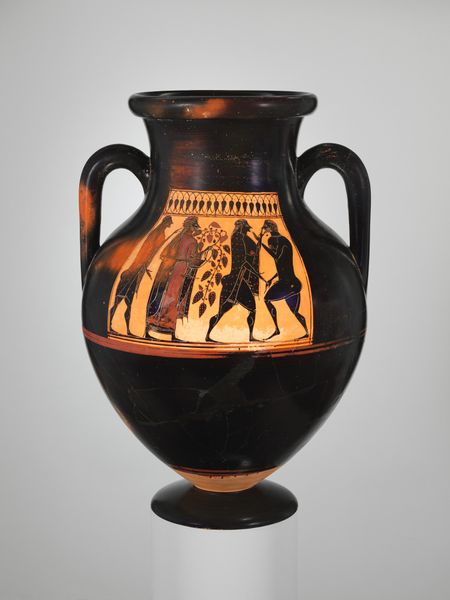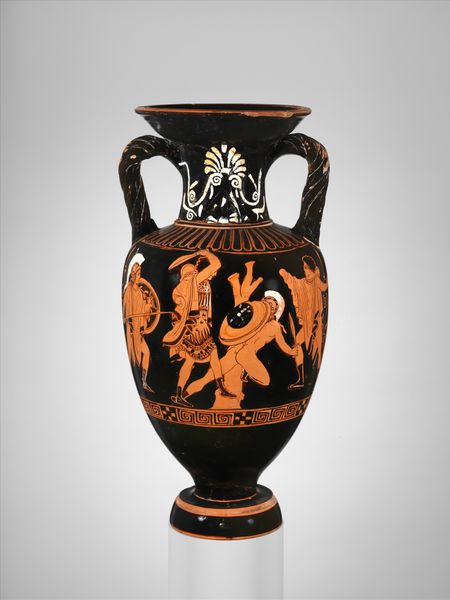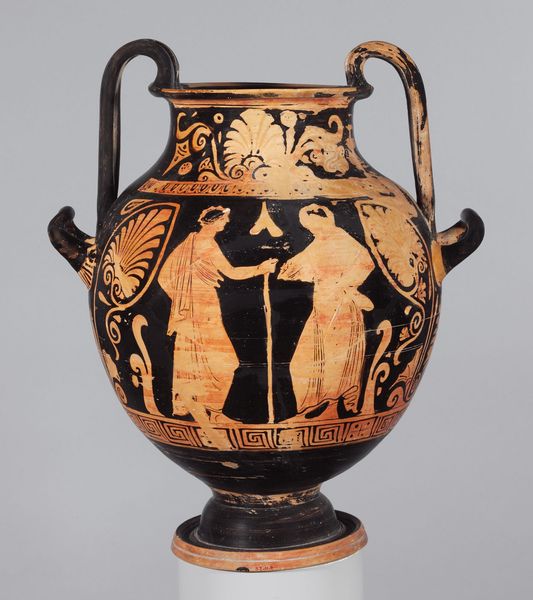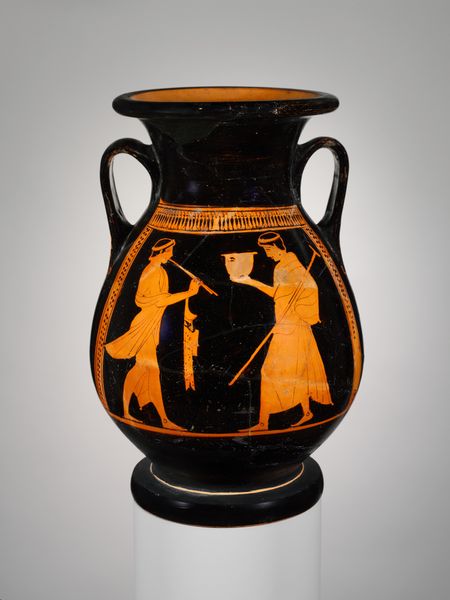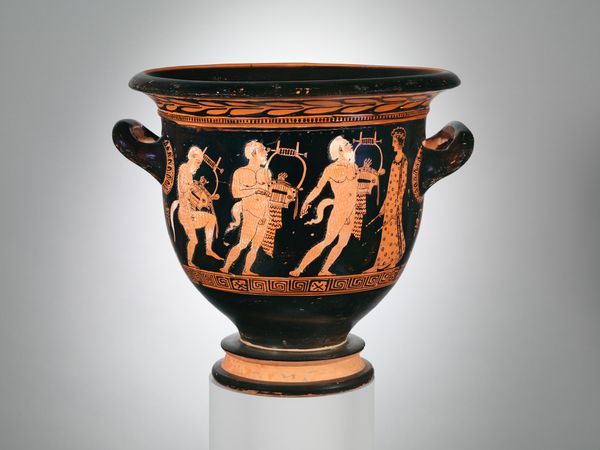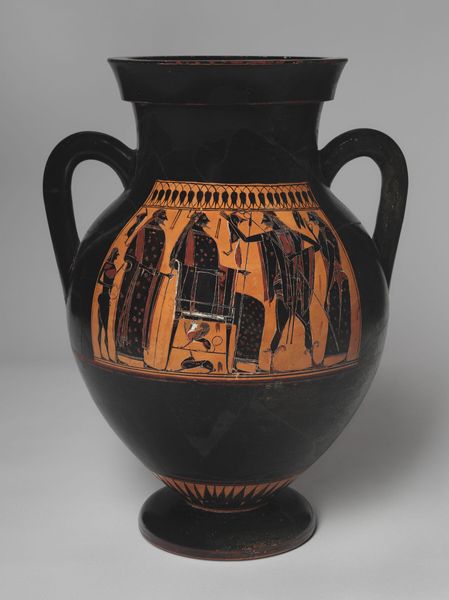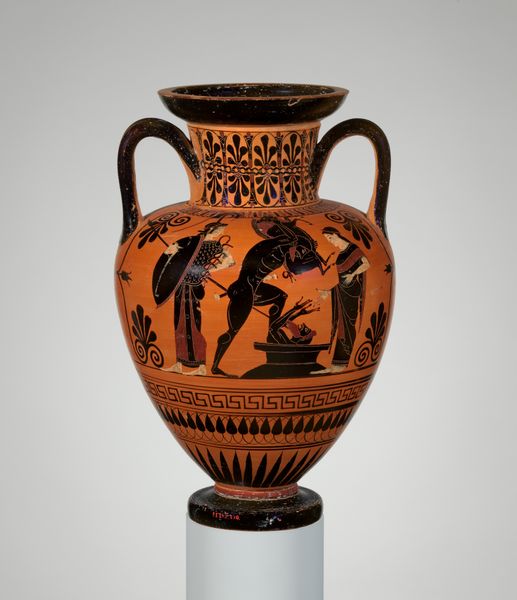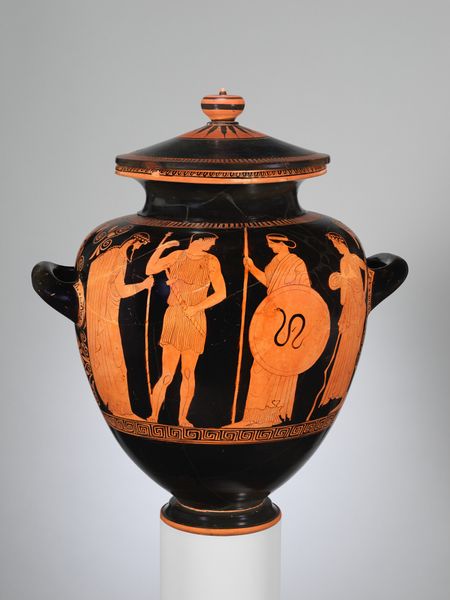
Terracotta neck-amphora (jar) with twisted handles 440 BC
0:00
0:00
drawing, ceramic
#
portrait
#
drawing
#
greek-and-roman-art
#
ceramic
#
vase
#
figuration
#
roman-art
#
ancient-mediterranean
#
ceramic
#
men
#
line
#
history-painting
Dimensions: H. 24 1/8 in. (61.3 cm) diameter 12 in. (30.5 cm)
Copyright: Public Domain
Curator: This is a terracotta neck-amphora, dating back to about 440 BC, now residing at the Met. What strikes you about it? Editor: The twisted handles are eye-catching, and the red figures really pop against the black background. I'm also wondering about the stories it tells and how it was produced... How do you interpret this work? Curator: Well, from a materialist perspective, I immediately think about the labour involved in sourcing the clay, preparing the slip for the figures, meticulously painting them, and then firing the entire piece. How was the clay sourced and what social structure enabled its acquisition and usage? Think about the social context that created a demand for such a vessel. This wasn't just art; it was a commodity. What can the decoration, the imagery of men and figures, tell us about its intended market and consumption? Editor: That's interesting. I hadn't considered it in terms of its economic value, rather just aesthetic value. Curator: Exactly. These weren't simply 'art objects' admired in a vacuum. The very material—the clay itself—connects us to the geological history of Attica. It’s about class, trade, and the economics of image making. How the 'low' material of earthenware is transformed into something of high cultural significance for trade and consumption. What kind of 'performance' occurred during painting? Think about who was involved and what that labor entails. Editor: So you're saying the artistry isn't just in the rendering of the figures but in the entire process, from the extraction of raw material to the final product's distribution and reception. Curator: Precisely. This amphora offers a snapshot of ancient Greek production. Now I'm looking at it, I want to analyze how a mass product was so individual for that time. What would have distinguished this amphora from similar ones? What was its material "value" versus artistic "worth" during production and consumption? Editor: It’s like reverse-engineering its history. Now I want to analyze more pottery from a perspective of commodity! Thanks for your analysis. Curator: And I am thinking more deeply now about the creative possibilities embedded in everyday utility. It's been very illuminating.
Comments
No comments
Be the first to comment and join the conversation on the ultimate creative platform.


